Backtrack, Britain's Leading Historical Railway Journal, covers all aspects of railway history from its earliest days through to more recent events up to around ten years before now including, early railway history from the 'pre-Stephenson' era, steam, diesel and electric locomotive history, railway company history, railway carriages and wagons, railway stations, railway ships, hotels & road vehicles, railway economic and social history, railway publicity and advertising. Backtrack's contributors include many of today's leading railway history writers. From the beginning the magazine has maintained a reputation for its production values and each issue contains a wealth of photographs reproduced to the highest standards, including a generous selection of historic colour. Published monthly, Backtrack is THE magazine for all who are interested in British railway history.
Editorial • Something about almost Everything but rarely Everything about Anything
Backtrack
TAKING IN THE NIGHT-LIFE
RICHARD DEELEY RATHER MORE THAN JUST COMPOUNDS AND ‘FLATIRONS’
HASTINGS TO TUNBRIDGE WELLS • (courtesy RCTS)
A WEEK ON THE BACUP-MOSTON GOODS • Former Bury footplateman BRIAN TOPPING relives some experieriences of local work in east Lancashire.
BURRY PORT TO CWMMAWR PART TWO
BY ELECTRIC TO ALTRINCHAM • The Manchester South Junction & Altrincham line, jointly owned by the London & North Western and Great Central Railways, served a populous suburban area and its busy route was electrified by the LMSR and LNER (to both of which it passed at the grouping) in 1931, using a 1,500V dc overhead system. This served well until 1971 when the line was converted to the now standard 25kV ac system and the veteran MSJA cars gave way to the Class 304 units of the Manchester–Crewe electrification. A further change, and a revolutionary one, came in 1992 when the Altrincham line became part of the Manchester Metro light railway system. These photographs of contrasting times are from the COLOUR-RAIL Collection.
THE CORONATION – 1937 STYLE • With the coronation of King Charles III this month, we can loook back to the crowning of our last King, George VI, at Westminster Abbey on 12th May 1937. Both the London & North Eastern Railway and the London Midland & Scottish Railway entered into the celebrations in grand style with two new AngloScottish expresses – the ‘Coronation’ and the ‘Coronation Scot’ over the East Coast and West Coast Main Lines respectively, both making their inaugural journeys on Monday 5th July 1937. These splendidly colourised photographs by DAVID P. WILLIAMS illustrate some of the most remarkable train services of this exciting period before World War II brought it to an end.
THE LOCOMOTIVES OF CONSETT IRONWORKS
PACIFIC TANKS ON THE LNER • The 4-6-2 – Pacific – wheel arrangement was not common on tank locomotives but the London & North Eastern Railway was to possess four inherited classes, one from the Great Central and three from the North Eastern.
THE LIGHT FADES ON THE CROMFORD & HIGH PEAK LINE
“NEW IN LONDON?” THE LIFE AND DEATH OF THE ALEXANDRA PALACE BRANCH
THE SLEEPING CAR TRAIN COLLISION AT BURNTISLAND
RECALLING THE GREAT CENTRAL MAIN LINE • The Manchester, Sheffield & Lincolnshire Railway had been one of the relatively minor companies operating across the north of England but its chairman, Sir Edward Watkin, had grandiose plans to expand the line's system. In 1893 the company obtained an Act authorising an extension from Annesley, near Nottingham, to Quainton Road, Buckinghamshire, where a connection was made with the Metropolitan Railway. The ‘London Extension’, as it was known, opened in March 1899 to a modest terminus at Marylebone by which time the MSLR had adopted the much grander title of ‘Great...
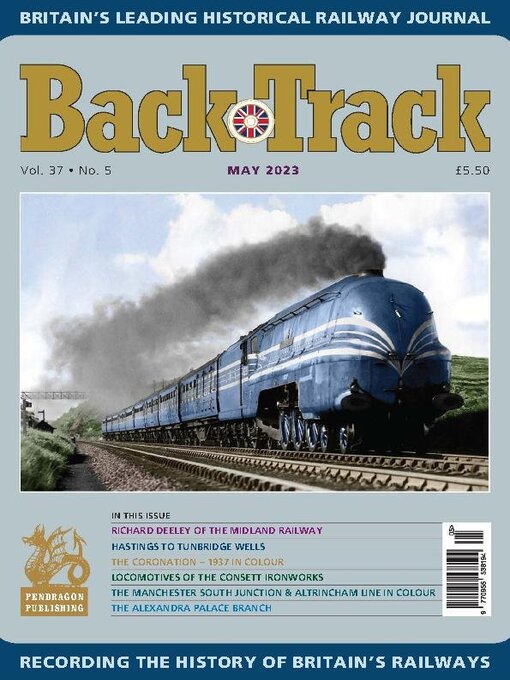
 Volume 39 No 1 - January 2025
Volume 39 No 1 - January 2025
 Volume 38 No 12 - December 2024
Volume 38 No 12 - December 2024
 Volume 38 No 11 - November 2024
Volume 38 No 11 - November 2024
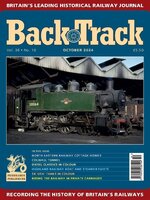 Volume 38 No 10 - October 2024
Volume 38 No 10 - October 2024
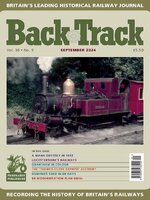 Volume 38 No 9 - September 2024
Volume 38 No 9 - September 2024
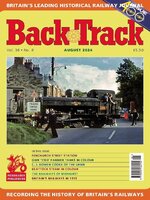 Volume 38 No 8 - August 2024
Volume 38 No 8 - August 2024
 Volume 38 No 7 - July 2024
Volume 38 No 7 - July 2024
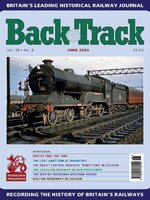 Volume 38 No 6 - June 2024
Volume 38 No 6 - June 2024
 Volume 38 No 5 - May 2024
Volume 38 No 5 - May 2024
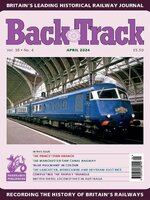 Volume 38 No 4 - April 2024
Volume 38 No 4 - April 2024
 Volume 38 No 3 - March 2024
Volume 38 No 3 - March 2024
 Volume 38 No 2 - February 2024
Volume 38 No 2 - February 2024
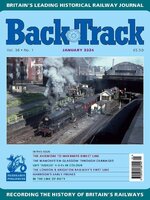 Volume 38 No 1 - January 2024
Volume 38 No 1 - January 2024
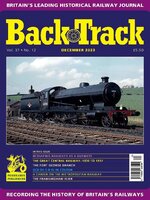 Volume 37 No 12 - December 2023
Volume 37 No 12 - December 2023
 Volume 37 No 11 - November 2023
Volume 37 No 11 - November 2023
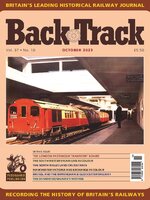 Volume 37 No 10 - October 2023
Volume 37 No 10 - October 2023
 Volume 37 No 9 - September 2023
Volume 37 No 9 - September 2023
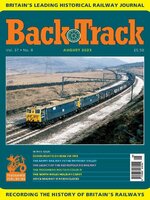 Volume 37 No 8 - August 2023
Volume 37 No 8 - August 2023
 Volume 37 No 7 - July 2023
Volume 37 No 7 - July 2023
 Volume 37 No 6 - June 2023
Volume 37 No 6 - June 2023
 Volume 37 No 5 - May 2023
Volume 37 No 5 - May 2023
 Volume 37 No 4 - April 2023
Volume 37 No 4 - April 2023
 Volume 37 No 3 - March 2023
Volume 37 No 3 - March 2023
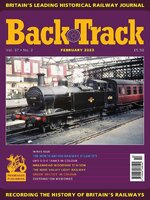 Volume 37 No 2 - February 2023
Volume 37 No 2 - February 2023
